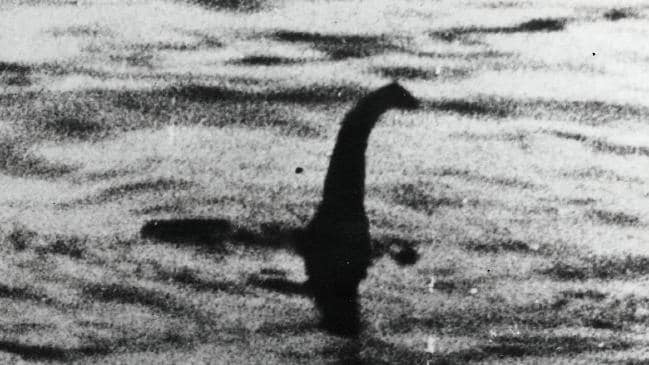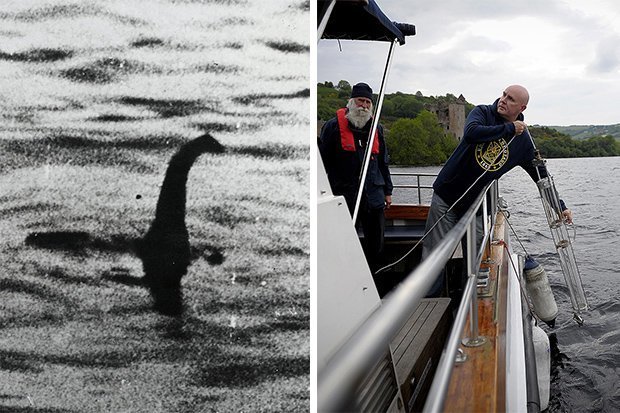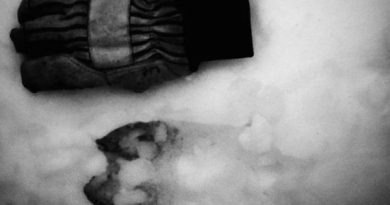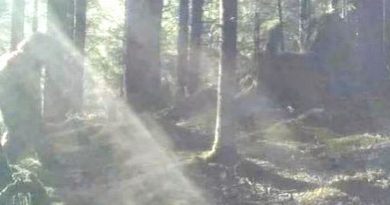Loch Ness Monster could be “Real” – says Scientific Community
A major scientific study of Loch Ness Monster has sensationally discovered Nessie ‘might’ – be real.
Professor Neil Gemmell, leading a team from the University of Otago in New Zealand that took DNA from the 23-mile lake, told the BBC: “We’ve tested each one of the main monster hypotheses and three of them we can probably say aren’t right and one might be.” ‘Nessie’, as the mythical beast is often endearingly dubbed, is commonly regarded as being large in shape with a long neck and possessing humps that protrude out of the Loch in the Scottish Highlands. Scholars have found a handful of reports of Nessie since 500AD but the creature had not gained worldwide fame until 1933.
Experts traveled the length of the famous loch on research vessel Deepscan taking water samples from three different depths. The scientists collected DNA left by all creatures from their skin, scales, feathers, fur, feces.
The DNA samples were then sent to labs in New Zealand, Australia, Denmark, and France to be analyzed for the final findings. Professor Neil Gemmell of the University of Otago, New Zealand and his team who carried out the project have now concluded their research.
The prof – an expert in genomics, ecology, population, conservation and evolutionary biology – now says the results were ‘surprising’. He says they tested the data against most of the main theories about the Loch Ness monster. Prof. Gemmell says while the full details will be released at a later stage one of the theories ‘might’ be correct.
Two main theories about the monster are it is a long-necked plesiosaur that somehow survived the period when dinosaurs became extinct, or it is a sturgeon or giant catfish. Prof Gemmell said he hoped to announce the full findings of the study in Scotland next month – but would not confirm which hypothesis might be right. He said: “Is there anything deeply mysterious? Hmm. It depends what you believe. Is there anything startling? There are a few things that are a bit surprising.
“What we’ll have achieved is what we set out to do, which is document the biodiversity of Loch Ness in June 2018 in some level of detail. “We’ve tested each one of the main monster hypotheses and three of them we can probably say aren’t right and one of them might be.”
It was hoped the study’s findings would be published earlier this year, but a series of failed attempts to film a television documentary delayed the process. Negotiations with a series of production companies ended without a deal. Hundreds of thousands of visitors flock to Loch Ness every year to try and catch a glimpse of the mythical monster. Nessie is worth millions of pounds to the Scottish economy – and tourist bosses previously said they are “eagerly anticipating” the results.

Announcing the study last year, Professor Gemmell said: “Scotland is dear to my heart because my mother and her family are Scottish, I’m delighted to be here to undertake our environmental DNA investigation of Loch Ness.
“It’s a place of extraordinary natural beauty.
He refused to say which hypothesis scientists were leaning towards, but one theory is the monster is a plesiosaur that somehow survived the period dinosaurs were wiped out. Another is the creature is a sturgeon or giant catfish. “Is there anything deeply mysterious? Hmm. It depends what you believe,” Prof Gemmell said. “Is there anything startling? There are a few things that are a bit surprising.
“What we’ll have achieved is what we set out to do, which is document the biodiversity of Loch Ness in some level of detail.” The results were supposed to be released in January but cataloguing the huge range of microorganisms and bacteria has taken longer than expected. According to the Loch Ness eDNA research page, the samples were extracted at Britain’s University of Hull and then sent to Laboratoire D’Ecologie Alpine in Grenoble, France for metabarcoding and sequencing.
From there, the data was sent to labs in Canberra, Copenhagen, Grenoble, Santa Cruz, Inverness, Hull, Baltimore and Dunedin for gene sequence analysis and comparison with samples stored on international DNA databases to identify each species present in the loch.
“We’re delighted with the amount of interest the project has generated in the science and, monster or not, we are going to understand Loch Ness, and the life in it, in a new way.”
German tourists try to lure Nessie with Haribo
A bizarre new trend has seen tourists throwing Haribo sweets in to Loch Ness to try and lure the monster. The mystery of this strange practice was recently solved by 53-year-old Steve Feltham who famously gave up his job, his house and even his girlfriend to hunt for the famous Scottish lake monster all the way back in 1991 and has been living on the shores of the loch ever since.
It didn’t take him long to notice that tourists kept throwing Haribo sweets in to the water and laughing. The reason, it turns out, is that there is an advert for Haribo in Germany which shows a tour guide at Loch Ness pouring a pile of Haribo sweets in to a bowl and offering it to his troupe. When the guide picks up one of the sweets and tosses it in to the air, Nessie emerges from the water and grabs it – much to the amusement of the tourists.
“Another mystery solved here at Loch Ness,” said Feltham.



